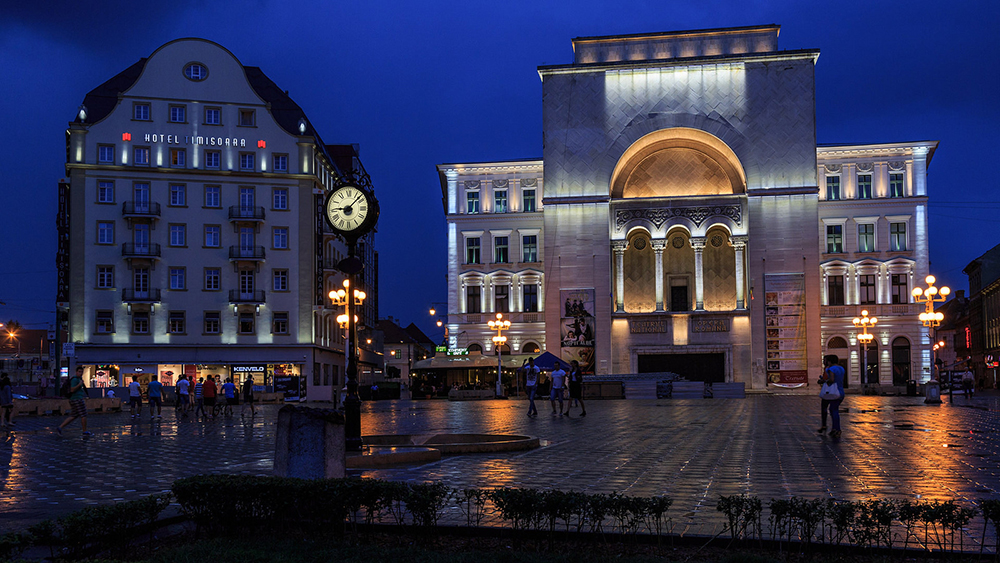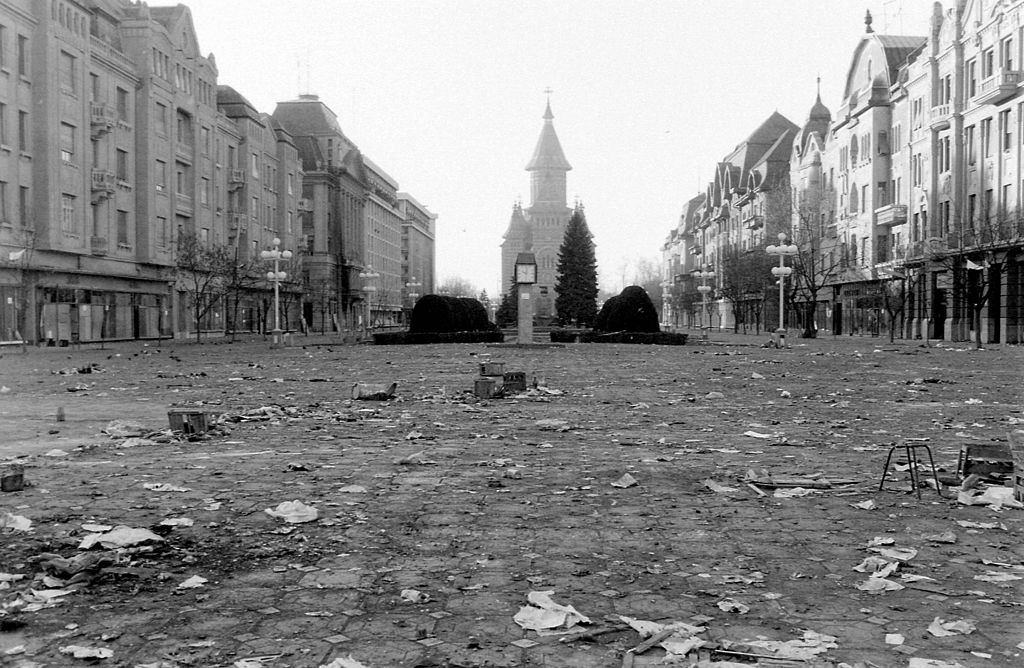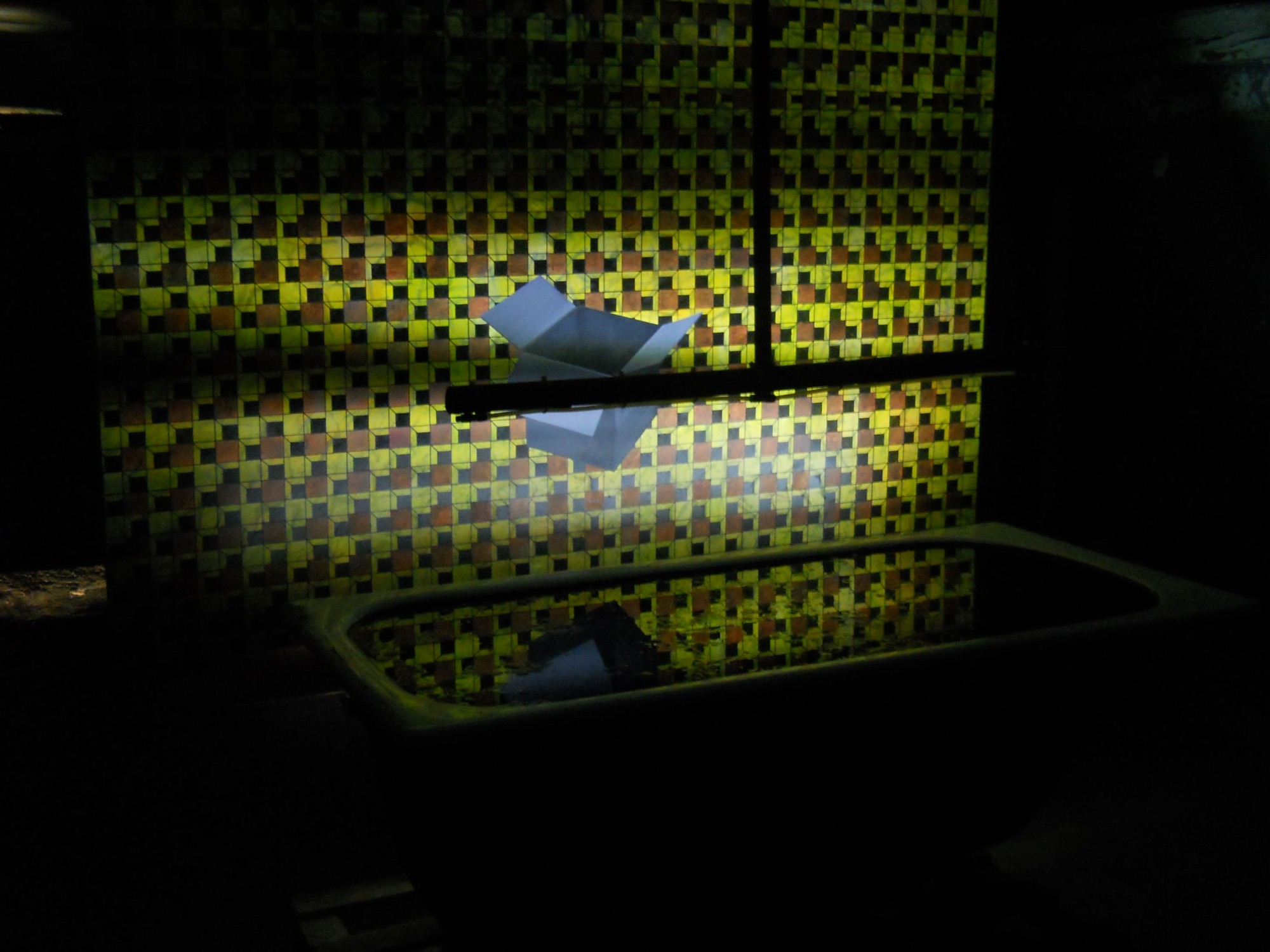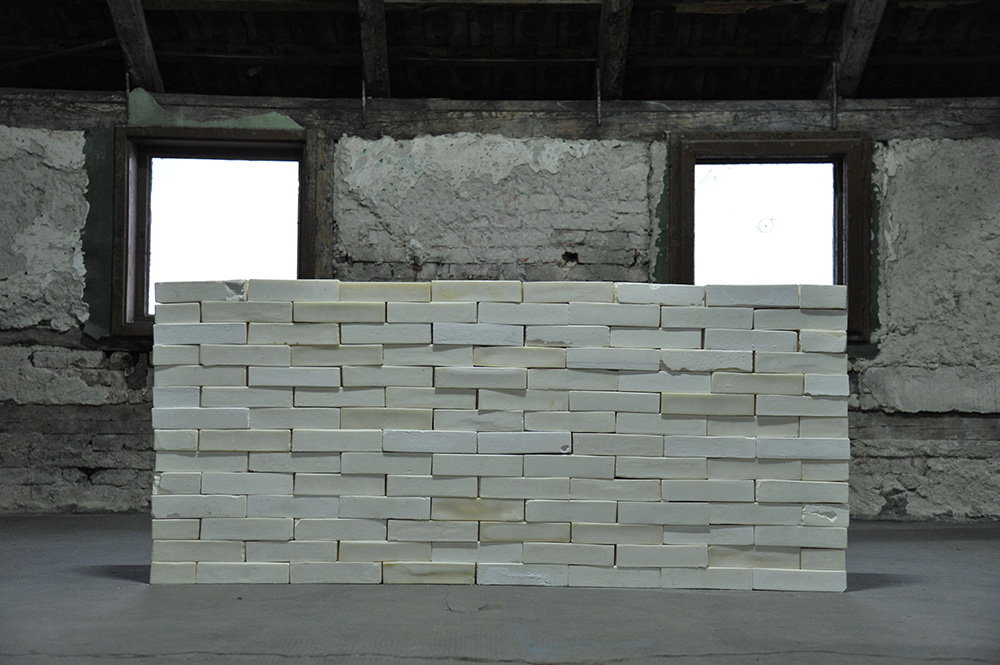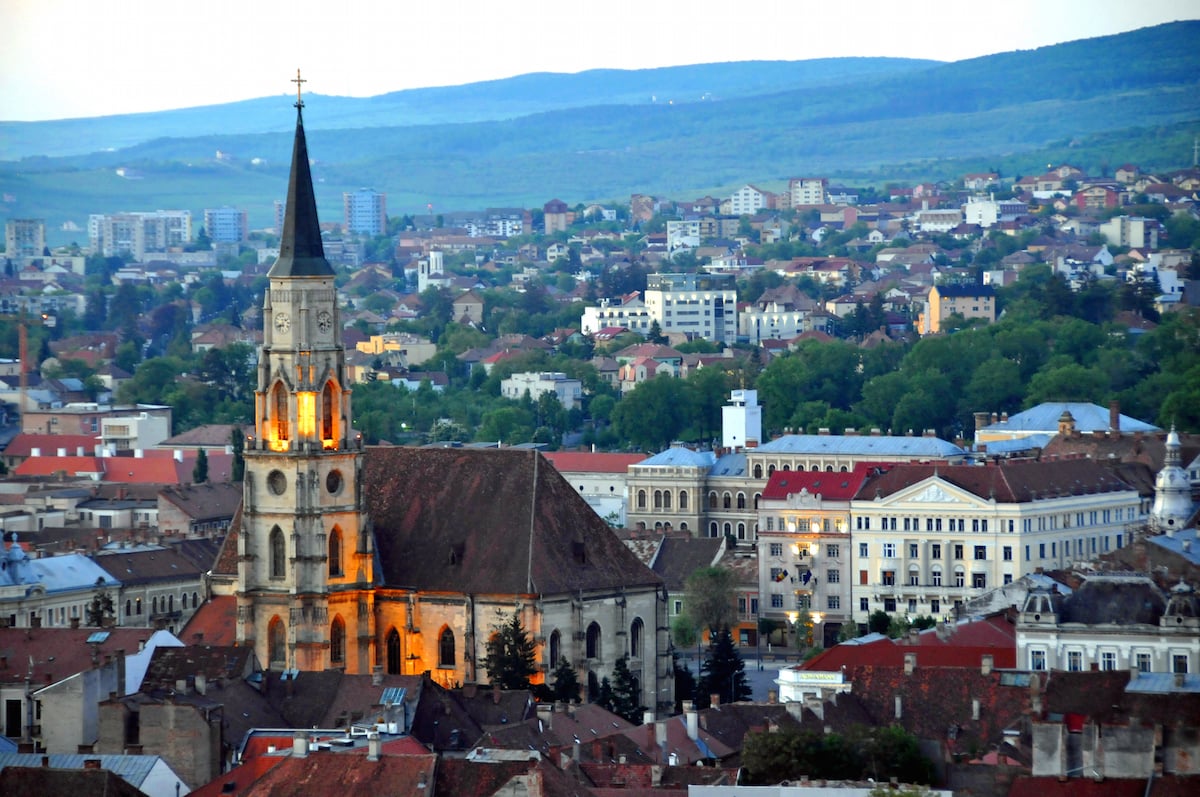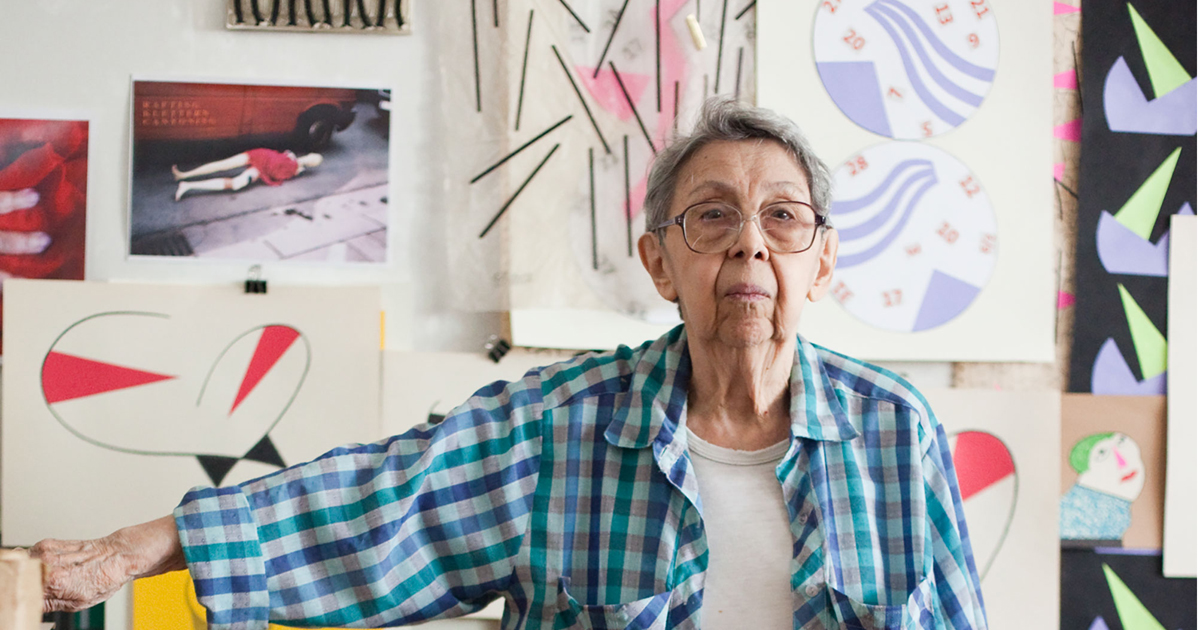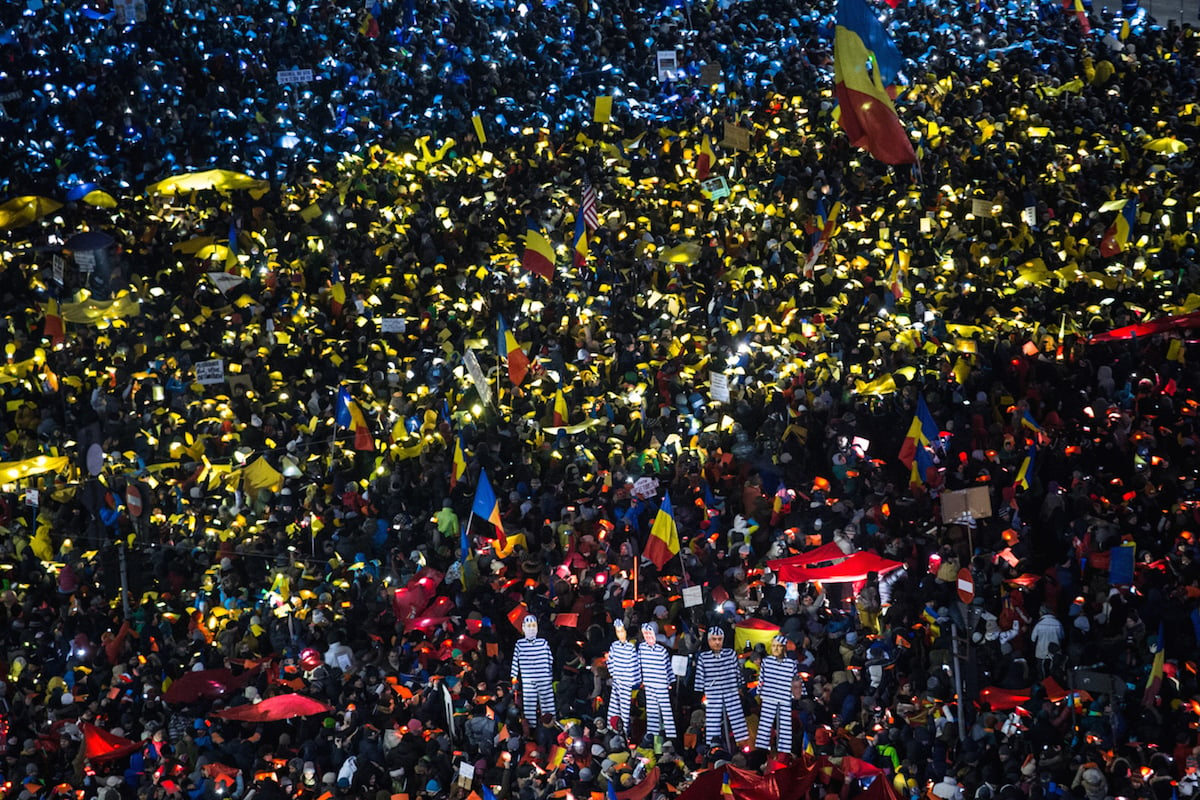Letter from Timişoara: will Romania’s westernmost city be Europe’s next art destination?
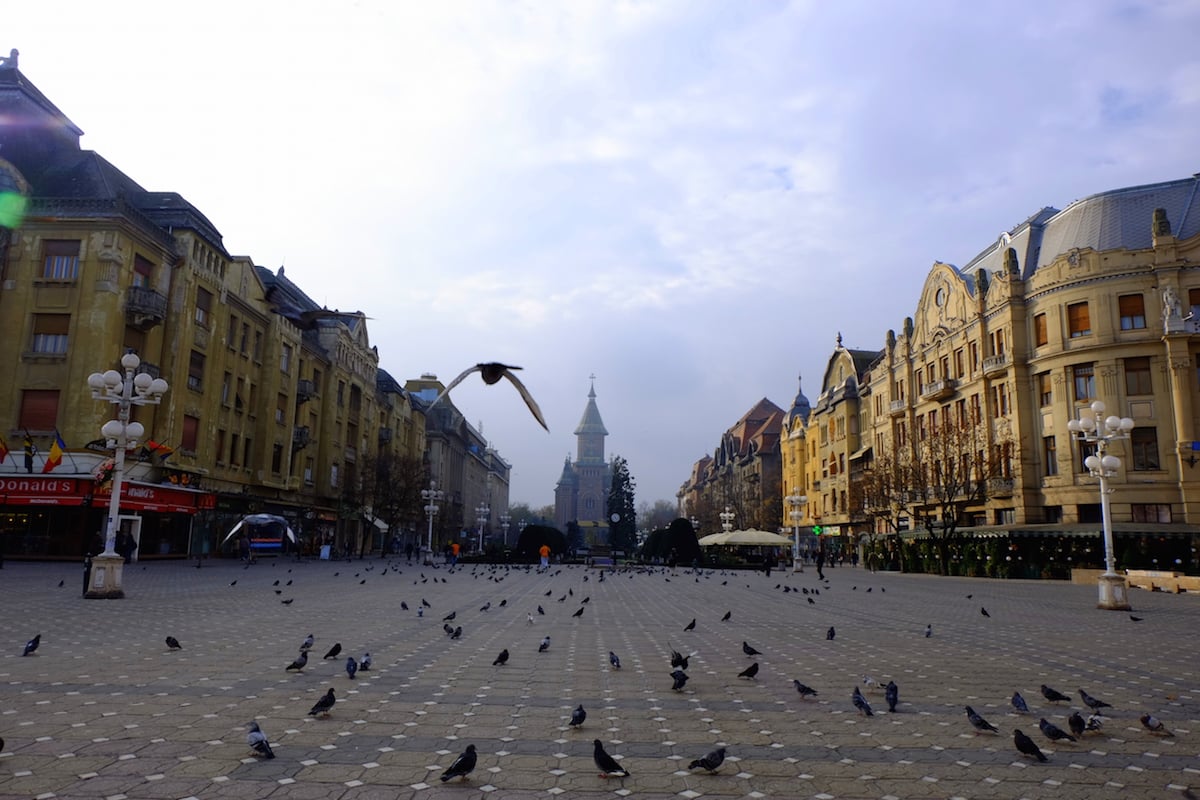
Timişoara, capital of western Romania’s Banat region, is a historic cultural centre that was at the heart of the revolution that brought down Ceausescu. Now it’s pushing a new identity as the country’s contemporary art hub, thanks to the Art Encounters Biennale
I’m standing on Victory Square, directly under the balcony of the Romanian National Opera, where the first speeches against Nicolae Ceauşescu’s iron-fisted rule were made on 20 December 1989. The fall of Ceauşescu’s regime started here in Timişoara, four days earlier. The view from the balcony looks out onto the Romanian Orthodox Cathedral on the south side of the square. The promenade between the two buildings would then have been swarming with demonstrators. Today, it is overwhelmingly quiet, with a few tourists huddling on the verandas of the various coffee shops, sipping their frothy cappuccinos whilst admiring the faded grandeur of the art nouveau buildings around them. I take out my phone to photograph the splendid facade of a former palace that now houses a McCafe — one of the more sophisticated branches of the fast-food joint I’ve ever come across. It’s only when I later zoom to inspect the photo that I first spot the bullet holes.
The uprising in Timişoara made history that December, but it came at a cost. Armoured cars and tanks arrived in the city on the 17 December; shots were fired from everywhere. 73 people died and hundreds more were wounded in a massacre orchestrated by Ceauşescu. It’s history that’s difficult to forget, whether you’re passing any of the many memorials located around the city, or looking at a giant inflatable tank by local artist Lea Rasovsky at Romania’s swankiest contemporary art biennale, Art Encounters. In the context of this city, Rasovsky’s installation — which swells, then deflates — is an apt metaphor for collective memory and tragedy: sometimes you don’t notice it, at other times it’s too much to face.
It’s the opening weekend of Art Encounters, an arts festival that launched in 2015 and is now in its second edition. Biennales today have become a fundamental in the way we consume and perceive art. They have also become essential tools for shaping the narrative of their host cities, especially when that city has experienced a tumultuous recent past. Kassel in central Germany was an ordinary post-industrial town, heavily damaged after the Second World War, when Documenta launched. What is now one of the most prestigious art events in the world played a vital part in the country’s recovery back in the 1950s. The same year that Art Encounters launched, Timişoara was announced as the European Capital of Culture 2021, beating Cluj-Napoca in the running. Art Encounters is not trying to cover up any bullet holes (where would you start?) — the greater motivation is to fill historical voids, to remember Timişoara’s forgotten cultural heritage.
With Geta Brătescu, who did not have representation until a few years ago, exhibiting at the Romanian Pavilion at the Venice Biennale this year; London’s Tate Modern featuring an installation by Brătescu’s contemporary, Ana Lupas, as part of their new extension; and Adrian Ghenie from the “Cluj School” of painters still breaking records at auctions, Romanian art has evolved into a subject that is garnering more and more attention in the Western art world. Bucharest already has two art biennales, while Cluj, known for its art school and alumni has an impressive roster of commercial galleries, like Plan B, as well as independent art spaces.
During the 1990s, Timisoara played host to Zona Europa de Est, a performing art festival, curated by Ileana Pintilie. What is lesser known, perhaps, is that even earlier, in the 1960s and 1970s, Timişoara was an important artistic centre for conceptual and avant-garde artists. The legacy of collectives 111 and SIGMA group forms a historical axis for the biennale. Their work is on display at the two central venues of the biennale. Especially for Art Encounters, The Museum of Art that’s housed in a Baroque Palace on the vibrant Unirii Square has restaged a 1968 show, originally exhibited at Kalinderu Hall in Bucharest, of key figures from the Timişoara art scene. At the time, this landmark exhibition represented a turning point for artists to break from the conformity of the regime in order to pursue conceptualism and abstraction. Another venue, the Ion Mincu Technical College cafeteria goes beyond the artists’ work itself to ask how these post-war avant-garde figures connect. What is the network that joins them together? The key figures of SIGMA, such as Ştefan Bertalan and Constantin Flondor, were not only artists but teachers at the Fine Arts Academy in Timişoara. Their work is crucial in understanding the cultural inheritance passed onto the younger artists featured in Art Encounters.
The rest of the biennale was, as the name suggests, envisioned as a series of “art encounters” around Timişoara (and a few venues in neighbouring Arad). Apart from Timco Halls, a former industrial space (and another place where protesters gathered in the first days of the Romanian Revolution), which has hosted a few group shows since 2010, none of the other venues have been used as exhibition spaces outside of the biennale. The Coreneliu Miklosi Public Transport Museum is perhaps the most unusual. The space was planned to reopen as a show-stopping tram museum this year (it should be said that Timişoara takes great pride in being the first Romanian city to have electric trams), but like another touristic landmark, the Banat Museum in Huniade Castle, it is “undergoing restoration until further notice,” perhaps in anticipation of 2021. Besides the peculiar assemblage of historic trams in the front yard, the city tram depot makes a surprisingly fitting venue for the biennale, where it is envisioned as a crossroads linking Romania with neighbouring cultures.
Ami Barak, who curated the show together with Diana Marincu, has described the Biennale as an opportunity to encounter the work of artists from other eastern European countries — a nod to Timişoara’s status as a “gateway” city. The biggest misconception about Timişoara is that it is a Transylvanian city like Cluj. You only need to look at the Huniade Castle in the city centre to see it has none of the distinctive features of a Transylvanian castle — such as brightly coloured spires. Timişoara is the capital of Timiș County, the western-most part of Romania, and is just 50 kilometres southeast of Hungary and 40 kilometres from the northern border with Serbia.
Romanian artist-duo Anca Benera and Arnold Estefan recreated a totem pole typical to Szerkerland, a mostly Hungarian-speaking region of Transylvania. This object, called a kopjafa, has recently been appropriated as a symbol of the far right in Hungary. Elsewhere at the tram museum, Cristian Rusu delves into Romania’s relationship with Yugoslavia during the communist period: when Romania was rumoured to have promised Yugoslavia one train-wagon full of salt for every defector it sent back. Rusu wanted to place the wagon full of salt in the middle of Timişoara; due to logistical complications it exists now only as a model.
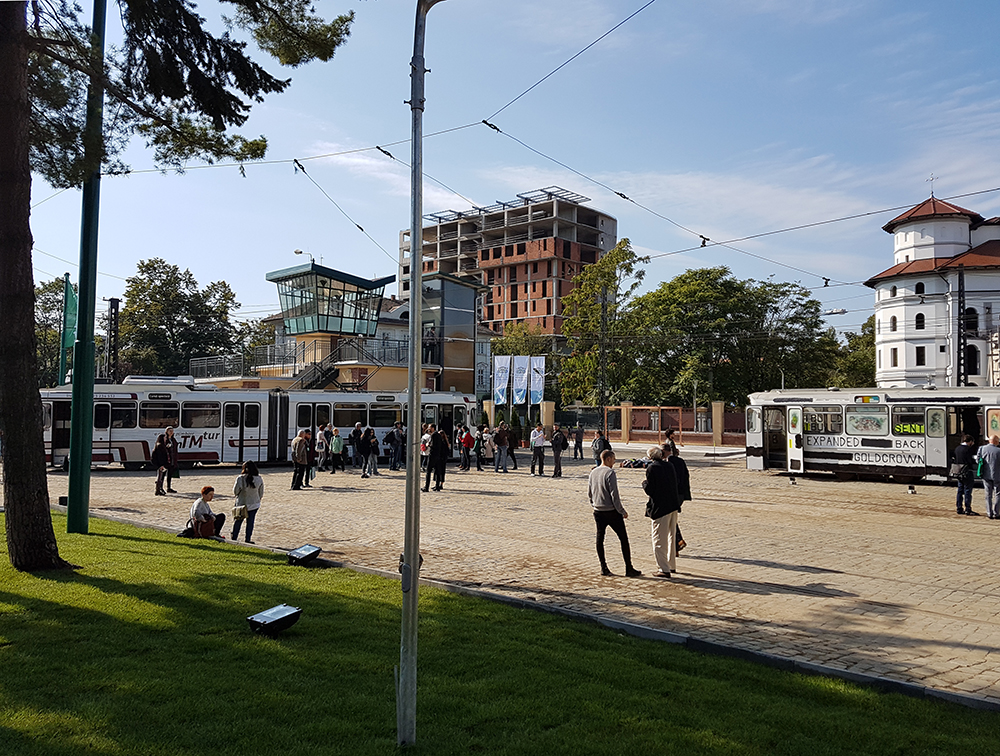
The biennale is structured around the idea of “encountering art” around the city; walking around its main venues, though, the stronger sense is that of the city encroaching onto the art spaces. There’s Israeli artist Yael Efrati and Romanian artist Arantxa Etcheverria, who have intergraded elements of buildings into their sculptures; or Croatian artist David Maljković, whose installation features the leaf of a palm tree gifted by the mayor of Timişoara. But it’s not just that the exhibited works engage with Timişoara’s history or the urban experience at large. What overshadows these exhibitions is the property development that’s always just next door.
Isho House, a venue across the road from the Public Transport Museum, shares its name with the ISHO developments, a 50,000-square-metre lot you can’t help but notice out of the window. Here, private space intermingles with private profit. By 2020, this space will be transformed into over 1,000 apartments, office building, parking spaces, parks and green areas, restaurants, terraces, sports facilities and various commercial functions. At Timco Halls, Michel Blazy’s three vegetable sculptures perfectly mirror the three buildings of the new business centre, Timişoara’s new IT and high-tech hotbed, which gleams through the glass of the former factory space.
This new Timişoara is being built on the traces of the city’s former textile factory and weavery mill. It so happens that the person who inherited the textile business and so is responsible for ISHO and the business centre is Ovidiu Sandor, president of Art Encounters Foundation. When I meet Sandor in a restaurant off Unirii Square, he’s down-to-earth and friendly, not the property tycoon I had imagined. As one of the few collectors in the country, he’s highly knowledgeable and passionate about art. He tells me about that the aim for the second edition of Art Encounters was to give space to local artists who were not shown at the inaugural festival, and that his dream is to eventually turn the Ion Mincu Technical College cafeteria into a permanent Kunsthalle.
If the Biennale is to become a significant destination for Romanian art it must look to the local art community for true “art encounters”. The highlight of the programme for me was the sense of spontaneity at its collateral events. One exhibition, by Timisoara-based collective Avantpost encompasses everything Art Encounters envisions itself to be: interdisciplinary, fun, historical yet experimental. As part of the 2015 edition of Art Encounters, Avantpost interspersed their artworks among the collections of the Memorial Museum of the 1989 Revolution. For the 2017 edition they decided to organise their own event, inspired by the Battery Factory, which undergirds Timişoara’s legacy as the first European city to have electric lights. Technology is therefore fundamental to the exhibition. Liliana Mercioiu Popa, who chose the venue, insists that they did not want to bring pre-existing works into the space. Compared to the way Art Encounters was set up as a whole, Avantpost’s Universe Allowed exhibition developed organically.
When I ask Mercioiu Popa about the importance of Art Encounters in the local art scene, her response is hopeful: “The fact that local artists get to meet artists from other important Romanian cities or from abroad is another gain for the local art scene, which, counting fewer people than the ones in Bucharest or Cluj, has so far been less known internationally.” One of the founders of Avantpost, Aura Bălănescu, is more critical. In her view, there needs to be a dialogue between those artists invited, and active local artists — “the ones that produce art currently and not the ones archived as belonging to the 70s”. Besides a permanent exhibition space, Popa suggests that for Art Encounters to develop further, the local artist community requires constant support: “If the biennale becomes an ambitious international event, it becomes unattainable for young artists and visual art graduates, who, in order to become participants, need work space, adequate residences.” The future might be bright, but it’s not yet guaranteed — something that a city with as rich and conflicted a history as Timişoara knows all too well.
